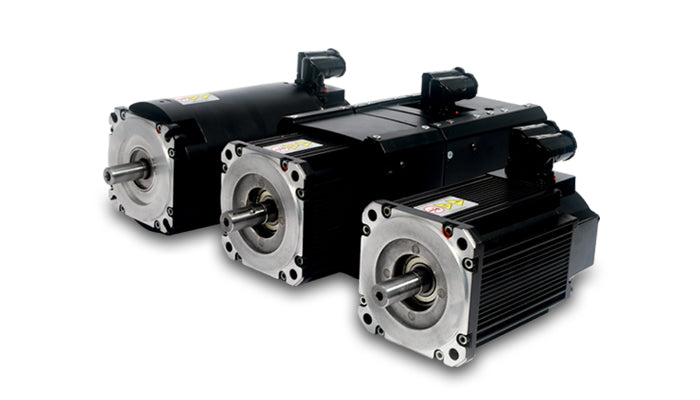
How Are Servo Motors and Drives Powering the Future of Smart Manufacturing in 2030?
Share
According to the report by Next Move Strategy Consulting, the global Servo Motors and Drives Market size is predicted to reach USD 19.13 billion by 2030 with a CAGR of 5.3% from 2024 to 2030.
Servo motors and drives are the unsung heroes behind the precision, efficiency, and intelligence of today’s advanced manufacturing and automation systems. From robotics and packaging to CNC machining and university labs, these components are becoming central to the evolution of Industry 4.0. In 2025, new innovations in servo technology are transforming not only how machines move, but also how engineers design, program, and optimize them.
What Makes Servo Motors and Drives Critical in Smart Automation?
According to the ABB report, Servo motors and drives are essential for systems that require precise control of position, speed, or torque. Unlike standard motors, they are designed for closed-loop operations where accuracy and responsiveness are critical.
Key functionalities:
- Real-time feedback for dynamic motion control
- Synchronization of multi-axis movements
- Energy efficiency and reduced downtime
According to ABB, the latest servo technologies are being engineered for high reliability, compactness, and advanced control algorithms—ideal for robotics, electronics manufacturing, and digital twin applications.
Summary:
- Servo motors ensure high-precision control, essential for smart factories.
- Integrated drives support real-time communication and reduced energy loss.
- ABB’s portfolio in 2024 emphasizes compact, flexible, and digital-ready servo systems.
How Is ABB Advancing Servo Technology for Smart Industries?
According to the report by ABB, At the China International Industry Fair (CIIF) 2023, ABB showcased its next-gen servo drives and motors tailored for intelligent automation and flexible production lines. These solutions are designed to support key manufacturing sectors such as electric vehicles, semiconductors, and medical equipment.
ABB is also incorporating digital twin capabilities into its servo platforms. This means manufacturers can simulate, test, and optimize their machines virtually—before physical deployment.
Summary:
- ABB’s servo drives now come with built-in safety and diagnostics.
- Digital twins enhance flexibility, enabling virtual machine commissioning.
- High-performance hardware supports faster and more precise motion.
How Are Educational Institutions Embracing Servo Drives?
Beyond the factory floor, servo drives and motion control systems are entering classrooms. Monash University in Australia has partnered with ABB to offer students real-world experience with industrial drives and programmable logic controllers (PLCs). This initiative aims to prepare future engineers for complex automation tasks in power and manufacturing sectors.
Key Takeaways from Monash-ABB Collaboration:
- Students gain hands-on skills with industrial-grade hardware.
- ABB’s software tools enable simulation-based learning.
- Focus is on energy efficiency, data acquisition, and motor control.
Summary:
- Servo drives are not just operational tools—they are now educational assets.
- ABB’s initiative bridges the skill gap between academia and industry.
- The next generation of engineers is being trained on real-world servo systems.
Where Is the Servo Motors and Drives Market Headed in North America?
According to the report by gm insights, the North American digital servo motors and drives market is seeing rapid growth, especially in precision-centric applications like aerospace, robotics, and renewable energy. According to a 2024 report by Global Market Insights, the region is experiencing strong demand due to:
- Rising adoption of automation across small and mid-sized enterprises
- Increased investment in robotics and smart motion control
- Upgrades to legacy systems for energy efficiency
Market Trends (2024–2025):
- Higher demand for compact servo systems for robotic arms
- Strong presence of digital interfaces like EtherCAT and Modbus TCP
- Growing focus on predictive maintenance using sensor-integrated drives
The report projects continuous growth driven by innovation in digital control systems and energy-conscious manufacturing practices.
Summary:
- North America is investing heavily in smart servo systems.
- Digital interfaces and energy efficiency are shaping buyer choices.
- Legacy drive upgrades are creating new business opportunities.
What Are the Key Takeaways for Industry Stakeholders?
Servo motors and drives are evolving from mechanical enablers into digital intelligence hubs. Their role in modern automation is expanding—from controlling motion to enabling data-driven decision-making.
In Short:
- ABB is leading the servo revolution with digital twin integration.
- Educational programs are building a skilled, servo-literate workforce.
- North America is a fast-growing market with demand for high-precision, low-energy systems.
Bullet Recap:
- Servo drives are central to Industry 4.0 manufacturing.
- ABB’s technologies emphasize safety, modularity, and virtual commissioning.
- Universities are integrating industrial-grade servo tools for education.
- The North American market is rising, driven by smart automation demand.
What Should You Do Next?
Whether you are a manufacturer, educator, or systems integrator, here are actionable steps to stay ahead:
-
Explore digital servo drive upgrades
Assess your existing motor systems for compatibility with modern, energy-efficient drives. -
Integrate simulation and digital twin tools
Use ABB’s platforms to model and optimize machine performance before implementation. -
Collaborate with academic institutions
Partner with engineering colleges to co-develop future-ready automation curricula. -
Invest in predictive maintenance solutions
Choose servo drives with built-in sensors and cloud connectivity to monitor performance in real time. -
Stay updated on regional market trends
Follow North American and Asia-Pacific servo markets for insights into demand shifts and innovation priorities.